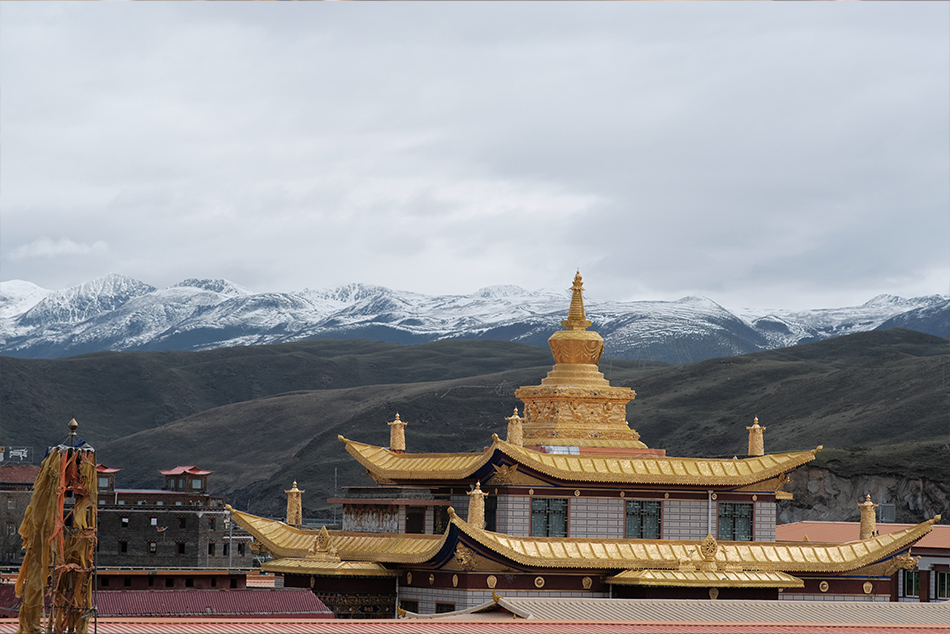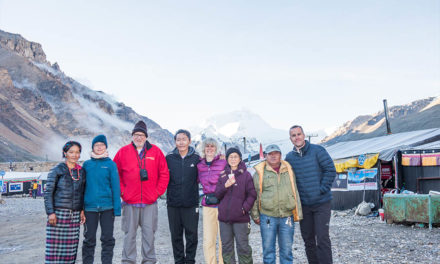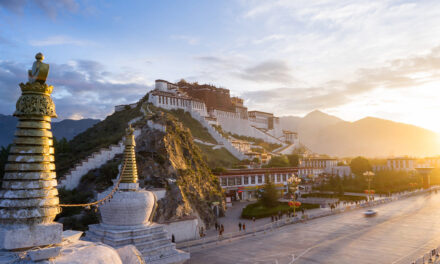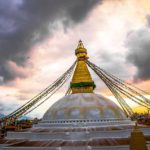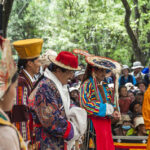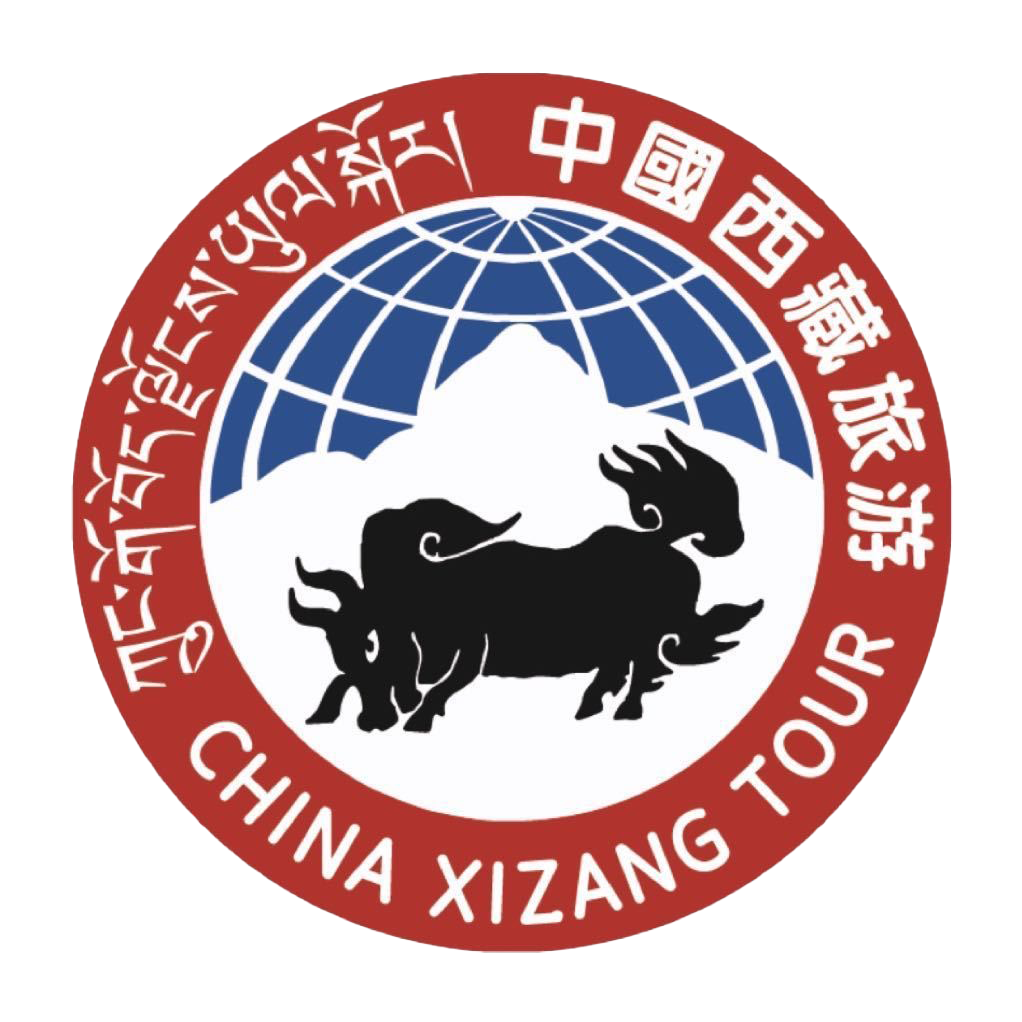In the heart of Asia, where ancient traditions meet modern adventures, the Sichuan-Tibet Highway, also known as the Chengdu-Lhasa Highway, beckons travelers on a mesmerizing journey. This iconic route connects the Sichuan Province with the mystical land of Tibet, offering two distinct routes: the Southern and Northern routes. As we explore these paths, let’s embark on an awe-inspiring adventure, guided by Nomadic Tibet, a professional Tibetan tour operator, renowned for his expertise in Tibetan travel.
Introduction
The Sichuan-Tibet Highway, a testament to human ingenuity, stands as a masterpiece of engineering that unveils a captivating world of landscapes and cultures. This intricate web of roads and mountain passes not only connects the Sichuan Province with the mystical realm of Tibet but also serves as a gateway to an extraordinary journey that transcends the ordinary.
As we embark on this expedition, we venture into a realm where ancient traditions coexist harmoniously with modern adventures. The Sichuan-Tibet Highway offers travelers the chance to traverse two distinct routes, each with its unique allure and charm. We are about to unravel the wonders of these paths and the experiences they promise.
So, join us on this extraordinary voyage as we explore the Southern and Northern routes of the Sichuan-Tibet Highway, unearthing the hidden treasures of this remarkable journey.
Southern Route – G318: The Enchanting Journey
Chengdu to Lhasa: A Dream Come True
The odyssey begins in Chengdu, the vibrant capital of Sichuan Province, where modernity mingles effortlessly with tradition. As travelers embark on this epic road trip, they set out on an adventure of a lifetime. The promise of discovery, both of self and the world, lures wanderers from far and wide to this remarkable journey.
The ultimate destination of this epic voyage is Lhasa, a city perched on the roof of the world. Lhasa stands as the spiritual and administrative heart of Tibet, where every corner echoes with centuries of profound cultural heritage. As you embark on this once-in-a-lifetime journey, the road leads you through a kaleidoscope of diverse terrains and experiences, offering a captivating glimpse into China’s rich tapestry of natural beauty and cultural diversity.
Every mile on this route is an ode to the human spirit’s capacity to overcome challenges and connect with the world. As you set forth from Chengdu, a world of wonders awaits, where dreams are woven into the very fabric of the road, and where the journey is as significant as the destination. This is the adventure that promises to become a cherished chapter in the story of your life.
The Allure of Sichuan’s Scenic Beauty
The Southern Route: A Path to Enchantment
The Southern Route, an integral segment of the G318 National Highway, beckons adventurers with its 2,149 kilometers of scenic splendor. This route is often the preferred choice for many, primarily because of its relatively shorter distance and lower altitudes, which make it more accessible to a wider range of travelers. However, its accessibility is just one of its many charms.
As you venture along this picturesque route, the road unfurls like a ribbon of discovery through Sichuan’s captivating landscapes. Each twist and turn reveals a new facet of nature’s beauty, leaving travelers in awe of the world’s wonders.
Mountains that Touch the Sky
One of the defining features of the Southern Route is its proximity to the majestic mountains that adorn the Sichuan landscape. Among them, the snow-capped Mount Gongga stands tall, a sentinel watching over the land. The sight of these towering peaks vaulting skyward is nothing short of awe-inspiring, and the road takes you ever closer to their grandeur.
Valleys of Enchantment
The journey along the Southern Route is a passage through enchanted valleys, where lush greenery and pristine rivers carve their way through the terrain. The Yarlung Zangbo Grand Canyon, known as the world’s deepest, is an enchanting marvel that graces this route. The canyon’s dramatic beauty is an ode to the power of nature, and as you stand at its edge, you can’t help but be humbled by the forces that shaped this incredible landscape.
The Serenity of Grasslands
The Southern Route also unveils the Maoya Grasslands, where undulating stretches of emerald fields meet the horizon. These grasslands are not only a feast for the eyes but also a serene backdrop for moments of reflection and connection with nature. The contented yaks grazing in these vast meadows seem like symbols of tranquility, adding to the idyllic charm of the journey.
Lakes of Pristine Beauty
As you continue on your voyage, the landscape transforms once more to reveal pristine lakes. Among them, Ranwu Lake, often referred to as “the Tibetan Switzerland,” captivates travelers with its crystalline waters reflecting the surrounding mountains. This ethereal lake is surrounded by the Gangrigabu Snow Mountain, the Azhagongla Glacier, and the Bosula Peak, creating a breathtaking setting that belongs in a fairy tale.
The Southern Route, with its varied and ever-changing scenery, has rightfully earned the moniker “China’s Landscape Avenue.” It offers not just a journey but an experience of profound natural beauty that stays etched in the heart.
As you traverse this path, you’ll find yourself intoxicated by the changing seasons, from the warmth of spring to the chill of snow-covered winter. The ever-evolving climate dances before your eyes, making you feel as if you’ve entered a realm where days pass like moments in heaven but years on Earth. This is the allure of Sichuan’s scenic beauty, and the Southern Route is your gateway to this extraordinary world.
Southern Route Attractions
A Treasure Trove of Delights
The Southern Route of the Sichuan-Tibet Highway is not just a road; it’s a treasure trove of attractions that promise to leave every traveler in awe. This enchanting journey boasts a plethora of highlights, each more captivating than the last. Let’s dive into some of the Southern Route’s most alluring destinations.
Xindu Bridge: A Photographer’s Paradise
If you have a penchant for photography, Xindu Bridge is a slice of heaven on Earth. This location, often dubbed a “photographer’s paradise,” is where the art of capturing nature’s beauty is taken to a new level. The bridge itself arches gracefully over a pristine river, offering the perfect frame for picturesque shots. The surrounding landscape, with its rolling hills and distant mountains, provides an ever-changing canvas for your creativity. Whether you’re a professional photographer or just someone with a smartphone, Xindu Bridge invites you to capture moments that will last a lifetime.
Yarlung Zangbo Grand Canyon: Nature’s Masterpiece
Prepare to be humbled by the Yarlung Zangbo Grand Canyon, a natural masterpiece that’s also the deepest canyon on Earth. The canyon’s dramatic beauty is an ode to the power of nature. As you stand at the canyon’s edge, you can’t help but be awestruck by the forces that shaped this incredible landscape. The Yarlung Zangbo River, flowing thousands of meters below, is the lifeblood of the canyon, carving its way through the mighty terrain. The ever-changing colors and textures of the canyon walls, the sound of the rushing river, and the fresh mountain air make this a place where you can lose yourself in the grandeur of nature.
Ranwu Lake: Crystal-Blue Serenity
Ranwu Lake, often referred to as “the Tibetan Switzerland,” is a sight to behold. This breathtaking body of water is located on the edge of the Sichuan-Tibet Highway, approximately 89 kilometers southwest of Basu County in the Qamdo region of Tibet. It is the largest lake in eastern Tibet and has earned its nickname due to its crystal-clear, turquoise waters and the surrounding snow-capped mountains. The lake stretches more than 10 kilometers toward the west and appears like a narrow river valley. The melted snow and ice from the nearby Gangrigabu Snow Mountain supply the lake with pristine water, creating a breathtaking contrast against the surrounding rugged terrain. Ranwu Lake is a place of serene beauty, a haven for those seeking solace in nature’s embrace.
Nyingchi: The East Switzerland
Nyingchi, often referred to as the “Tibet Jiangnan,” is a hidden gem located in the southeast of Tibet, east of Lhasa. This region boasts a humid climate, creating a lush and pleasant environment. The majority of the population in Nyingchi is comprised of the Menba and Lhoba ethnic minorities. Traveling through Nyingchi is an experience like no other. Here, you’ll discover beautiful lakes, deep gorges, vast forests, azalea-filled meadows, and so much more. As you step into Nyingchi, you’ll understand why it’s renowned as the “East Switzerland” and the “Jiangnan of Tibet.” The average altitude here is about 3,100 meters, making it the lowest area in Tibet. Nyingchi’s landscape and climate are reminiscent of the fertile and prosperous region south of the Yangtze River in China, known as Jiangnan. It’s a place of incomparable beauty that invites you to immerse yourself in its unique charm.
The Southern Route of the Sichuan-Tibet Highway promises an ever-changing and colorful journey. Here, you can experience “varied weathers across mountains, four seasons in a day.” Each of these attractions is a chapter in the story of this remarkable route, where the beauty of nature and the warmth of culture come together to create an unforgettable adventure.
Driving the Sichuan-Tibet Highway
A Journey Through Varied Terrains
As you embark on the epic adventure of driving the Sichuan-Tibet Highway, you’ll find that while road conditions are generally good, the Southern Route presents a fascinating array of terrains. This road, a true marvel of engineering, winds its way through picturesque landscapes, offering a sense of being suspended between “the mind in heaven, the body in hell.” Here’s what you can expect when navigating this captivating route.
A Canyon Odyssey
The Southern Route treats travelers to the thrill of canyon roads. As you wind your way through the Sichuan-Tibet Highway, you’ll often find yourself driving along the edges of deep canyons, with the world dropping away beneath you. These roads, while offering some of the most dramatic and awe-inspiring views, also demand careful and skillful navigation. The rocky, rugged terrain of the canyons adds an element of adventure to your journey, and you’ll be awestruck by the sheer scale and grandeur of the landscape.
Conquering Mountain Passes
The Southern Route is no stranger to mountain passes. These high-altitude crossings take you through the heart of the Sichuan landscape. While the road conditions are generally good, you’ll need to be prepared for steep inclines, sharp turns, and the occasional hairpin bend. These mountain passes are not just a passage but an experience in themselves. As you ascend into the heavens, you’ll be rewarded with sweeping vistas of mountain ranges, valleys, and distant horizons. Each pass is a testament to human engineering and determination, providing access to the hidden treasures of Tibet.
The Mind in Heaven, the Body in Hell
Driving along the Southern Route is often described as a journey where you experience “the mind in heaven, the body in hell.” This poetic expression captures the essence of the road. On one hand, you’ll feel as if your soul has ascended to heavenly heights as you gaze upon the breathtaking landscapes and the towering peaks. On the other hand, the physical demands of navigating the challenging terrain will keep you grounded in reality. This duality is what makes the journey along the Sichuan-Tibet Highway so extraordinary.
The Best Time to Travel
When should you embark on this extraordinary adventure? The best time to traverse the Southern Route is during the months of May to June and September to October. These periods offer the most favorable weather conditions, ensuring a safe and enjoyable journey. Traveling during the rainy season, which typically falls in July and August, can be more challenging due to occasional mudslides and landslides. Therefore, planning your journey during the recommended months will provide a smoother and more memorable experience.
The Sichuan-Tibet Highway, with its ever-changing landscapes and varying terrains, is an adventure of a lifetime. It’s a road that connects you with the heart of Tibet while immersing you in the beauty of Sichuan’s natural wonders. As you navigate this route, you’ll find yourself in a world where the line between heaven and earth blurs, and the journey becomes the destination itself.
Northern Route – G317: A Cultural Odyssey
The Spiritual Northbound Journey
As we delve deeper into the journey along the Sichuan-Tibet Highway, we find ourselves on the Northern Route, a path less traveled but equally mesmerizing. This northern passage, spanning 2,412 kilometers, is a spiritual pilgrimage for those seeking profound cultural experiences. It leads travelers through pastoral areas, unveiling the rich tapestry of Tibetan culture and the profound Buddhist heritage that defines this region. Let’s embark on this remarkable northbound journey.
A Longer Path, A Deeper Connection
The Northern Route, while a longer journey compared to its southern counterpart, offers travelers a unique opportunity to connect with the cultural heart of Tibet. It’s a path that beckons those in search of more than just scenic beauty; it calls to the spiritual and the inquisitive. The road stretches through pastoral areas, where nomadic communities thrive, and the traditions of the Tibetan people are etched into the landscape. Every kilometer on this route is a step closer to understanding the essence of Tibet.
Pastoral Beauty and High Altitudes
This journey through the Northern Route leads travelers through pastoral areas, where vast grasslands, yaks grazing peacefully, and the crisp mountain air welcome you. The landscape is defined by high altitudes, sparser population, and more primitive surroundings. It’s a stark contrast to the bustling cities of the world, offering a peaceful retreat into the heart of nature. The nomadic way of life, deeply intertwined with the land, becomes evident as you encounter traditional tents, herds of yaks, and the warm smiles of the local Tibetans.
Unveiling Cultural Stories
The “Great Northern Route” is not just a physical journey; it’s a passage through time and culture. Along the way, travelers will encounter towering snow-capped mountains, wild rushing rivers, broad and beautiful grasslands, white and beautiful tents, prayer flags fluttering in the wind, and magnificent temples. Each of these elements is a chapter in the cultural story of Tibet. The Seda La Rong Wuming Institute of Buddhism, Yaqing Temple, Dege Sutra-Printing House, Jiangda Wala Wuming Buddhist Institute, Changdu Qiang Balin Temple, and many more religious and cultural landmarks dot the path. These places are not just monuments but living testaments to the enduring spirit of Tibet.
A Road of Religious and Cultural Significance
The Northern Route is not just a road; it’s a journey where religious and cultural threads come together. It’s a place where you can immerse yourself in the teachings of Tibetan Buddhism, witness age-old traditions, and understand the intricate relationship between the people and their land. The Northern Route is a testament to the resilience and faith of the Tibetan people. It’s a pilgrimage for the soul, an opportunity to explore the very essence of this extraordinary region.
Best Time to Embark
When is the best time to set out on this spiritual northbound journey? It’s advisable to plan your adventure during the months of May to June and September to October. These periods offer the most favorable weather conditions for travel. Traveling in the rainy season, which falls in July and August, can be more challenging due to road conditions. By choosing the recommended months, you ensure a safe and enriching experience.
The Northern Route of the Sichuan-Tibet Highway is an invitation to explore the cultural richness and spiritual depth of Tibet. It’s a journey where the road itself becomes a bridge between worlds, connecting you with the heart of this remarkable region.
Land of Pastoral Beauty
The Northern Route of the Sichuan-Tibet Highway is an adventure like no other. This scenic passage meanders through sparsely populated areas, where higher elevations give rise to a more primitive and magnificent landscape. As you journey through this land of pastoral beauty, you’ll find yourself surrounded by awe-inspiring natural wonders, from the “Oriental Alps” of Siguniang Mountain to the “ancient country of thousands of watchtowers” in Danba. Let’s delve deeper into this extraordinary landscape.
The Majesty of Siguniang Mountain
As you begin your northern adventure, the towering peaks of Siguniang Mountain greet you. Often referred to as the “Oriental Alps,” this mountain range is a majestic sight to behold. The snow-capped summits, lush forests, and pristine meadows create a landscape that’s nothing short of breathtaking. Whether you’re an avid hiker or simply an admirer of natural beauty, Siguniang Mountain offers a haven for exploration and appreciation. Its grandeur is only matched by its tranquility, making it a must-visit destination on the Northern Route.
Danba: The Ancient Land of Watchtowers
The Northern Route continues its journey through the captivating region of Danba, known as the “ancient country of thousands of watchtowers.” Here, the landscape is dotted with traditional Tibetan watchtowers, each with its own unique design and history. These architectural marvels not only serve as cultural landmarks but also offer a glimpse into the rich heritage of the Tibetan people. As you explore the winding roads and picturesque villages of Danba, you’ll find yourself immersed in a world where time seems to stand still, and the past comes to life.
Connecting with Nature
The Northern Route takes you through some of the most pristine and untouched natural landscapes. You’ll encounter wide, rolling grasslands that seem to stretch to the horizon, where yaks graze peacefully and nomadic communities thrive. The air is crisp and pure, and the silence is broken only by the occasional breeze and the soft sounds of nature. It’s a place where you can truly connect with the earth and the simple beauty of existence.
The Spiritual and the Scenic
What makes the Northern Route truly special is the harmonious coexistence of the spiritual and the scenic. It’s a journey where you’ll not only be captivated by the natural beauty but also deeply moved by the cultural significance of the land. The road is lined with prayer flags that flutter in the wind, monasteries that seem to emerge from the earth itself, and the warm smiles of the local Tibetan people. Each moment is a testament to the profound connection between the spiritual and the scenic.
Embarking on a Journey of Discovery
When planning your adventure along the Northern Route, consider embarking during the months of May to June and September to October. These periods provide the most favorable weather conditions and ensure a safe and enjoyable journey. Traveling during the rainy season, typically in July and August, may pose some challenges due to occasional road conditions. By choosing the recommended months, you’ll have the opportunity to fully immerse yourself in the pristine beauty of this remarkable land.
The Northern Route of the Sichuan-Tibet Highway is an invitation to explore the unspoiled beauty of nature and the enduring traditions of the Tibetan people. It’s a journey that transcends time and space, where the landscape itself becomes a storyteller, and every mile offers a new chapter in the tale of this extraordinary region.
The Northern Route’s Cultural Gems
A Journey Through Tibet’s Rich Heritage
The Northern Route of the Sichuan-Tibet Highway isn’t just a road trip; it’s a cultural treasure trove waiting to be explored. This scenic passage takes you on a remarkable journey through some of Tibet’s most significant cultural and religious sites. From the ancient Zandan Monastery to the awe-inspiring “world’s highest lake” Namtso, every stop on this route captivates your vision and touches your soul, immersing you in the rich religious and cultural traditions of Tibet.
Zandan Monastery: A Spiritual Sanctuary
As you embark on the Northern Route, one of the first cultural gems you’ll encounter is Zandan Monastery. Nestled in the pristine Tibetan landscape, this monastery is not just a place of worship but a sanctuary for spiritual seekers. With a history that dates back centuries, Zandan Monastery is a testament to Tibet’s enduring religious traditions. Its architecture, adorned with intricate details and vibrant colors, is a marvel to behold. Inside, you’ll find sacred relics, exquisite thangka paintings, and the soothing chants of monks engaged in their daily rituals. Zandan Monastery offers a profound glimpse into Tibetan Buddhism and the unwavering faith of its people.
Namtso: The Roof of the World
Namtso, often referred to as the “world’s highest lake,” is a natural wonder that will leave you in awe. Located in the northern reaches of Tibet, Namtso is surrounded by rugged mountains and expansive grasslands. Its pristine waters shimmer under the vast expanse of the sky, creating a scene of unparalleled beauty. For Tibetans, Namtso is a sacred lake, and its waters are believed to possess healing properties. Pilgrims often circumambulate the lake, offering prayers and seeking spiritual solace. As you gaze upon the breathtaking expanse of Namtso, you’ll understand why it’s often called the “Roof of the World.”
The Cultural Mosaic of the Northern Route
The Northern Route of the Sichuan-Tibet Highway weaves through a cultural mosaic that’s both diverse and enchanting. Along the way, you’ll encounter ancient monasteries, traditional Tibetan villages, and nomadic communities. The road is adorned with colorful prayer flags that flutter in the wind, carrying the hopes and blessings of those who’ve placed them there. You’ll have the chance to witness the daily lives of the local Tibetan people, to share in their customs, and to learn about the profound role that spirituality plays in their existence.
Immersion in Tibetan Traditions
One of the most captivating aspects of the Northern Route is the opportunity for immersion in Tibetan traditions. Whether you’re exploring a monastery, participating in a local festival, or simply engaging with the warm and welcoming Tibetan people, you’ll find that every moment is a journey of discovery. The scent of juniper incense fills the air, prayer wheels spin with devotion, and the sound of monks’ chants creates a sense of tranquility that envelops you. It’s a journey that transcends the ordinary and delves into the heart of Tibetan culture.
Timing Your Cultural Odyssey
To make the most of your cultural odyssey along the Northern Route, consider planning your journey during the months of May to June and September to October. These periods offer the best weather conditions for safe and enjoyable travel. While July and August may bring occasional challenges due to road conditions during the rainy season, the recommended months ensure a seamless and enriching experience.
The Northern Route of the Sichuan-Tibet Highway isn’t just a road trip; it’s an immersion into the cultural and spiritual heart of Tibet. Each stop along the way unveils a new layer of this rich heritage, leaving you with a profound understanding of the traditions that have shaped this extraordinary region.
Navigating the Northern Adventure
Embracing the Challenges and Riches of the Northern Route
Embarking on the Northern Route of the Sichuan-Tibet Highway is not for the faint of heart. This longer and more challenging journey, spanning 2,412 kilometers, offers a unique adventure for those who seek a deeper connection with Tibetan culture and a closer encounter with the rugged beauty of the Tibetan plateau. While road conditions can be more challenging due to higher elevations, this route promises an exciting and thrilling journey that unveils the riches of Tibet. The best time to explore this route is from May to June and September to October, ensuring a safe and memorable adventure.
The Allure of Higher Elevations
The Northern Route takes you to greater heights, both in terms of elevation and cultural experiences. As you ascend into the higher regions of Tibet, you’ll be greeted by pristine mountain landscapes, expansive grasslands, and the presence of nomadic communities. This elevation provides a unique vantage point to appreciate the grandeur of Tibet’s natural beauty. The towering peaks of the “Oriental Alps” in Siguniang Mountain and the mesmerizing vistas of the Tibetan plateau create a sense of awe that is unparalleled.
Danba: An Ancient Country of Watchtowers
As you traverse the Northern Route, you’ll come across Danba, often referred to as the “ancient country of thousands of watchtowers.” Danba is renowned for its unique architectural heritage—ancient watchtowers that dot the landscape. These towering structures, constructed from wood and stone, have stood for centuries, serving both as defensive fortifications and symbols of the region’s rich history. Each watchtower tells a story of the people who built them and the challenges they faced in this rugged terrain.
A Journey Through Tibetan Buddhism
The Northern Route is a cultural and spiritual pilgrimage. It takes you on a journey through the heart of Tibetan Buddhism, with stops at some of the most significant monasteries and religious sites. Along the way, you’ll have the opportunity to explore monastic life, witness the daily rituals of monks, and gain a deeper understanding of Tibetan religious traditions. The sound of prayers, the aroma of incense, and the sight of colorful prayer flags create an immersive experience that resonates with the soul.
A Glimpse into Nomadic Life
The Northern Route also introduces you to the nomadic way of life. Nomadic communities, with their distinctive yak hair tents and herds of livestock, offer a glimpse into a lifestyle that has endured for generations. You’ll have the chance to interact with nomadic families, learn about their traditions, and understand the delicate balance between nature and culture that defines their existence. It’s a cultural exchange that fosters a profound appreciation for the resilience of these communities.
The Rich Tapestry of Tibetan Culture
As you progress along the Northern Route, you’ll realize that it’s not just a journey; it’s an immersion into the rich tapestry of Tibetan culture. The journey is adorned with colorful prayer flags, fluttering in the wind and carrying the hopes and blessings of those who’ve placed them there. Local festivals and celebrations provide an opportunity to engage with the warm and welcoming Tibetan people, to share in their customs, and to partake in their joyous festivities.
Timing Your Northern Adventure
To make the most of your Northern adventure, plan your journey during the months of May to June and September to October. These periods offer the best weather conditions for safe and enjoyable travel. While July and August may bring occasional challenges due to road conditions during the rainy season, the recommended months ensure a seamless and enriching experience.
The Northern Route of the Sichuan-Tibet Highway is an adventure that challenges, inspires, and enriches. It’s a journey into the heart of Tibetan culture, where every turn in the road unveils a new facet of this extraordinary land.
Choosing Your Route: Southern or Northern?
Tailoring Your Sichuan-Tibet Journey to Your Preferences
Deciding between the Southern and Northern routes of the Sichuan-Tibet Highway is a crucial step in planning your adventure. Each route offers a unique set of experiences, landscapes, and cultural encounters. Your choice should align with your preferences and what you hope to gain from this remarkable journey through Tibet.
Southern Route: A Paradise of Natural Beauty
If your heart yearns for captivating natural beauty and shorter distances, the Southern Route beckons. This path, spanning 2,149 kilometers, showcases Sichuan’s enchanting landscapes, offering travelers breathtaking vistas of mountains, valleys, grasslands, and pristine lakes. The Southern Route is a paradise for those who wish to immerse themselves in China’s diverse terrains and relish the ever-changing scenery.
Xindu Bridge: A Photographer’s Paradise: Your journey begins with Xindu Bridge, a destination that photographers dream of. Here, you’ll capture the perfect shot with the majestic backdrop of the Sichuan-Tibet Highway winding through the mountains. The interplay of light and landscape creates a visual spectacle that is a delight for photographers and travelers alike.
Yarlung Zangbo Grand Canyon: As you continue your voyage, you’ll encounter the awe-inspiring Yarlung Zangbo Grand Canyon, known as the deepest canyon on Earth. The sheer cliffs and winding river below paint a picture of nature’s incredible power and beauty. Standing at the canyon’s edge, you’ll feel dwarfed by the grandeur of this natural wonder.
Ranwu Lake: A Crystal-Blue Gem: Ranwu Lake is another gem along the Southern Route. Its crystal-blue waters are framed by snow-capped mountains, creating a picture-perfect setting that seems almost surreal. A visit here is a moment of serenity and reflection in the heart of Tibet’s untamed beauty.
Nyingchi: A Captivating Oasis: Nyingchi, often referred to as the “Switzerland of Tibet,” is a captivating destination on the Southern Route. The region boasts beautiful lakes, deep gorges, immense forests, and azalea-filled meadows. Nyingchi’s lush landscapes and pleasant climate provide a serene contrast to the rugged terrain you’ve encountered along the way.
Navigating the Southern Adventure
While road conditions on the Southern Route are generally good, the route features an array of terrains, from canyon roads to mountain passes. The road winds through picturesque landscapes, offering a sense of “the mind in heaven, the body in hell.” It’s an adventure that can be enjoyed from May to June and September to October when the weather is most favorable.
Northern Route: A Cultural Pilgrimage
If you’re on a quest for deeper cultural experiences, spiritual encounters, and a longer adventure, the Northern Route awaits. Stretching over 2,412 kilometers, this route is a pilgrimage for those seeking a profound connection with Tibetan culture and the rich Buddhist heritage that defines the region.
Higher Elevations, Richer Experiences: The Northern Route takes you to higher elevations, both in terms of geography and cultural immersion. As you ascend into the pristine mountain regions of Tibet, you’ll be enveloped by the rugged beauty of the Tibetan plateau. The towering peaks and expansive grasslands create a sense of wonder and reverence.
Danba: Ancient Watchtowers: Your journey introduces you to Danba, known as the “ancient country of thousands of watchtowers.” This unique region is characterized by its ancient watchtowers, which stand as enduring symbols of the area’s history and resilience. The watchtowers tell stories of the people who built them, adding depth to your cultural exploration.
A Journey Through Tibetan Buddhism: The Northern Route is a cultural and spiritual odyssey. It leads you through the heart of Tibetan Buddhism, with stops at some of the most significant monasteries and religious sites. Here, you’ll gain insights into the daily rituals of monks, witness the artistry of religious ceremonies, and immerse yourself in the sacred traditions of Tibet.
Nomadic Encounters: The Northern Route also offers an intimate look into the nomadic way of life. Nomadic communities, with their distinctive yak hair tents and herds of livestock, provide a glimpse into a lifestyle that has endured for generations. Engaging with nomadic families and learning about their traditions deepens your appreciation for their resilience and harmony with nature.
Tibetan Culture Unveiled: Your journey along the Northern Route reveals the rich tapestry of Tibetan culture. Colorful prayer flags flutter in the wind, and local festivals and celebrations offer opportunities to engage with the warm Tibetan people. This immersive experience allows you to participate in their customs and festivities, forging connections and cherished memories.
Timing Your Northern Adventure
To make the most of your Northern adventure, plan your journey during the months of May to June and September to October. These periods ensure the best weather conditions for a safe and meaningful exploration of Tibetan culture and landscapes. While July and August may bring occasional challenges due to road conditions during the rainy season, the recommended months guarantee a seamless and enriching experience.
In the end, your choice between the Southern and Northern routes depends on your individual preferences. Whether you seek the wonders of natural beauty or the depths of cultural immersion, the Sichuan-Tibet Highway has a path for you. Each route promises an unforgettable journey that connects you with the heart of Tibet, making every mile a memorable adventure.
Road Conditions: Asphalt or Adventure?
Navigating the Sichuan-Tibet Highway with Confidence
One of the key considerations when embarking on a journey along the Sichuan-Tibet Highway is the road conditions. While the idea of an adventure might conjure images of rugged terrain and challenging paths, the reality of this iconic highway is a bit different. Both the Southern and Northern routes have seen significant improvements, ensuring a more comfortable yet thrilling drive.
The Evolution of Road Conditions
In the early days of the Sichuan-Tibet Highway, travelers had to contend with rough and unpaved roads, making the journey more of an adventure than many bargained for. However, over the years, significant investments have been made to enhance the infrastructure of this vital route. Today, both the Southern and Northern routes are experiencing a transformation.
Southern Route: The Beauty of Asphalt
The Southern Route, renowned for its breathtaking natural beauty, now features well-maintained asphalt roads. This upgrade has not only made the journey smoother but has also reduced travel time, allowing you to cover more ground each day. The pristine roads wind through picturesque landscapes, providing a sense of comfort and safety as you explore the wonders of Sichuan’s enchanting terrains.
Northern Route: A Thrilling Adventure
The Northern Route, with its cultural treasures and spiritual encounters, also benefits from improved road conditions. While the elevation and terrain are more challenging, the roads have been upgraded to ensure a more manageable drive. Travelers on the Northern Route can now enjoy the best of both worlds: an adventurous journey through the rugged beauty of Tibet and the assurance of well-maintained roads.
Timing Your Adventure
The best time to embark on your Sichuan-Tibet adventure is during the months of May to June and September to October. These periods offer the most favorable weather conditions, ensuring a smooth and safe drive. While July and August may bring occasional challenges due to road conditions during the rainy season, the recommended months provide a seamless and enriching experience.
Best Times to Travel: Seasonal Delights
Choosing the right time to embark on your Sichuan-Tibet adventure is essential for ensuring a memorable and safe journey. The seasons along this iconic highway bring their unique charm, offering travelers a chance to witness the changing landscapes and cultures. To make the most of your expedition, it’s crucial to time your travel just right.
Spring Awakening: May to June
One of the most delightful times to explore the Sichuan-Tibet Highway is during the spring months of May to June. As the grip of winter loosens, the landscape awakens with vibrant colors. The valleys burst into a tapestry of wildflowers, and the snow-capped peaks glisten in the warming sun. Travelers can revel in the lush greenery, making it an ideal period for photographers and nature enthusiasts.
The pleasant weather during spring ensures a comfortable journey. With milder temperatures and clear skies, you can fully appreciate the stunning vistas and captivating cultural experiences that this highway has to offer.
Autumn Splendor: September to October
As the year winds down, the Sichuan-Tibet Highway undergoes another transformation, this time into an autumn wonderland. The months of September to October present travelers with a landscape painted in warm hues of gold and amber. The forests don their fall attire, and the meadows become a sea of russet and orange.
The crisp, cool air of autumn is perfect for exploration. With clear visibility, you can admire the mountain ranges and pristine lakes in all their glory. The autumn months are also less crowded, offering a sense of tranquility and a chance for more intimate cultural encounters.
Rainy Season Cautions: July and August
While the Sichuan-Tibet Highway is a breathtaking route to explore, it’s essential to avoid the rainy season, which occurs in July and August. During these months, heavy rainfall can lead to occasional mudslides and landslides along the routes. Traveling in such conditions can be challenging and less safe.
To ensure your safety and the smooth progress of your journey, it’s advisable to plan your Sichuan-Tibet adventure outside the rainy season. By choosing the more favorable periods of spring and autumn, you can revel in the beauty of this remarkable highway without the weather-related challenges.
Nomadic Tibet: Your Expert Travel Companion
Embarking on a journey as epic as the Sichuan-Tibet Highway requires more than just a sense of adventure; it calls for a reliable and knowledgeable companion. In the world of Tibet travel, Nomadic Tibet stands out as your expert travel companion, offering a wealth of experience and insights to make your expedition seamless and enriching.
Unparalleled Expertise
Nomadic Tibet is not just a tour operator; it’s a team of dedicated professionals who have an intimate understanding of Tibet, its culture, and its diverse landscapes. With years of experience in the region, they possess the expertise to curate journeys that go beyond the ordinary.
Tailored Itineraries
One of the key strengths of Nomadic Tibet is their ability to craft personalized itineraries that cater to your specific interests and preferences. Whether you are a nature enthusiast, a history buff, or a spiritual seeker, they can design a journey that aligns with your desires.
Cultural Immersion
Tibet is a land of profound cultural richness, and Nomadic Tibet excels in providing opportunities for cultural immersion. Their itineraries often include visits to monasteries, interactions with local Tibetans, and participation in traditional rituals. This ensures that you not only witness Tibet’s culture but also become a part of it.
Safety and Comfort
Safety is paramount when embarking on a high-altitude journey like the Sichuan-Tibet Highway. Nomadic Tibet places a strong emphasis on the well-being of their travelers. They provide modern and comfortable vehicles, experienced drivers, and well-planned routes to ensure a smooth and secure adventure.
Eco-Friendly Practices
Nomadic Tibet is committed to responsible tourism. They strive to minimize the environmental impact of their journeys and support local communities. By choosing to travel with them, you can contribute to sustainable tourism practices in Tibet.
Conclusion
The Sichuan-Tibet Highway, with its Southern and Northern routes, is more than just a roadway; it’s a passage to a world of wonder, beauty, and culture. Whether you choose the Southern path with its breathtaking landscapes or the Northern route with its deep cultural immersion, this journey promises to be a life-changing experience.
Frequently Asked Questions (FAQs)
Which is the Best Time to Travel the Sichuan-Tibet Highway?
One of the key considerations when embarking on a journey as epic as the Sichuan-Tibet Highway is the timing. The best times to traverse this remarkable route are from May to June and September to October.
Spring Awakening: May to June
May marks the beginning of spring in this region. The landscapes start to come alive with vibrant colors as flowers bloom and the snow begins to melt. The weather is generally mild, and you’ll find the days comfortable for travel. During this time, you’ll witness the lush greenery of Sichuan and the early awakening of the Tibetan Plateau.
In June, the weather becomes even more pleasant. The days are longer, allowing for more daylight hours to explore and appreciate the stunning scenery. You’ll experience the transition from spring to early summer, with cooler mornings and evenings, making it perfect for outdoor activities.
Autumn Splendor: September to October
As the summer heat begins to wane, September brings a sense of renewal to the landscapes. This is a fantastic time to hit the road, as the weather remains pleasant, and the natural beauty of both Sichuan and Tibet is at its peak. The skies are often clear, offering excellent visibility of the breathtaking mountains and valleys.
By October, the landscapes are painted in rich hues of red, orange, and gold as the trees change their colors. This is an ideal time for those who wish to capture the stunning fall foliage in their photographs. The temperatures are still comfortable, and you’ll have the opportunity to witness the landscapes at their finest.
Avoiding the Rainy Season
While May to June and September to October are the prime times to travel the Sichuan-Tibet Highway, it’s advisable to avoid the rainy season, which typically falls in July and August. During these months, occasional mudslides and landslides can impact the routes, making travel more challenging.
So, whether you prefer the rejuvenation of spring or the splendor of autumn, planning your journey during the best times will ensure that you get to experience the Sichuan-Tibet Highway at its most captivating. The weather is on your side, and the landscapes are dressed in their finest attire, ready to welcome you on this incredible adventure.
What’s the Difference Between the Southern and Northern Routes?
Choosing between the Southern and Northern routes of the Sichuan-Tibet Highway is a decision that depends on your preferences and the type of experience you seek. These routes offer distinct characteristics that cater to different interests and travel desires.
Southern Route: Natural Beauty
The Southern Route, a part of the G318 National Highway, covers a distance of approximately 2,149 kilometers. This route is favored by many travelers due to its relatively shorter distance and lower altitudes, making it more accessible and manageable for those who seek a more nature-oriented journey.
Scenic Beauty: The Southern Route is a treasure trove of natural attractions. It takes you through picturesque landscapes, showcasing mountains, valleys, grasslands, and pristine lakes. You’ll be treated to breathtaking vistas as the road winds through Sichuan’s enchanting landscapes. This route is often considered the “golden route” for photographers and nature enthusiasts.
Key Highlights: Some of the highlights along the Southern Route include the Xindu Bridge, often described as a photographer’s paradise, the awe-inspiring Yarlung Zangbo Grand Canyon, the crystal-blue Ranwu Lake, and the captivating Nyingchi. The journey along this route promises an ever-changing and colorful experience where you can encounter “varied weathers across mountains, four seasons in a day.”
Road Conditions: While road conditions are generally good, the Southern Route features an array of terrains, from canyon roads to mountain passes. The road winds through picturesque landscapes, offering a sense of “the mind in heaven, the body in hell.” The best time to embark on this adventure is from May to June and September to October when the weather is pleasant, and the landscapes are at their finest.
Northern Route: Cultural Experiences
The Northern Route, a longer journey at approximately 2,412 kilometers, offers a different kind of adventure. This route is for travelers seeking deeper cultural experiences and spiritual encounters. It leads you through pastoral areas and showcases the rich Tibetan culture and Buddhist heritage that define the region.
Land of Pastoral Beauty: The Northern Route meanders through sparsely populated areas with higher elevations, offering a more primitive and magnificent landscape. It takes you from the “Oriental Alps” of Siguniang Mountain to the “ancient country of thousands of watchtowers” in Danba.
Cultural Gems: This route is a cultural treasure trove, with stops at places like Zandan Monastery, “the world’s highest lake” Namtso, and many more. The journey not only captivates your vision but also touches your soul, immersing you in the rich religious and cultural traditions of Tibet.
Navigating the Northern Adventure: While road conditions are more challenging due to the higher elevations, the Northern Route offers an exciting and thrilling journey for those who seek a deeper connection with Tibetan culture. The best time to explore this route is also from May to June and September to October when the weather is most accommodating.
In conclusion, deciding between the Southern and Northern routes depends on your interests and what you hope to experience. If you crave natural beauty and shorter distances, the Southern Route is ideal. For those seeking deeper cultural experiences and spiritual encounters, the Northern Route is a must. Whichever path you choose, the Sichuan-Tibet Highway promises an unforgettable journey filled with awe-inspiring sights and meaningful experiences.
Are the Road Conditions Suitable for All Types of Vehicles?
When it comes to traveling the Sichuan-Tibet Highway, road conditions are a significant consideration. The good news is that the roads along both the Southern and Northern routes are continuously improving, making the journey more accessible to a wide range of vehicles. However, it’s important to understand what to expect when embarking on this adventure.
Southern Route: Suitable for Various Vehicles
The Southern Route is known for its relatively better road conditions compared to the Northern Route. As part of the G318 National Highway, this route has been a focus of development, resulting in well-maintained asphalt roads in many areas. This makes it suitable for a variety of vehicles, including cars, buses, and smaller vans.
Road Conditions: While the Southern Route offers better road conditions, it’s essential to note that this route features a variety of terrains. Travelers will navigate through canyon roads, mountain passes, and winding roads that take them through picturesque landscapes. The road conditions can vary, so some sections may be more challenging than others.
Northern Route: Adventure Awaits
The Northern Route, while offering a more profound cultural experience, also presents a different set of challenges. This route goes through sparsely populated areas with higher elevations, resulting in a more primitive and magnificent landscape. Road conditions can be less predictable, making it an adventure for those seeking a more immersive journey.
Road Conditions: The road conditions along the Northern Route can be more challenging due to the higher elevations and the rugged terrain. Travelers may encounter unpaved sections and areas where the road may not be as well-maintained as in urban centers. This is why it’s often described as an adventure, and it’s suitable for travelers who are seeking a more off-the-beaten-path experience.
In summary, the road conditions along the Sichuan-Tibet Highway are continuously improving. Both routes are undergoing upgrades to ensure smoother journeys. The Southern Route offers well-maintained asphalt roads, providing a comfortable yet adventurous drive for a wide range of vehicles. The Northern Route, on the other hand, presents a more challenging and thrilling adventure, with road conditions that may require more preparation and a sense of adventure.
Ultimately, the choice between the Southern and Northern routes and the type of vehicle to use will depend on your preferences, travel style, and the level of adventure you seek. Whether you opt for the smoother Southern path or the more adventurous Northern route, both offer a unique and unforgettable journey through the stunning landscapes of Tibet.
How can I ensure a seamless journey through the Sichuan-Tibet Highway?
Embarking on a journey along the Sichuan-Tibet Highway, whether through the Southern or Northern routes, is an adventure of a lifetime. To ensure a seamless and enriching travel experience, it’s essential to have the right guidance and support. One of the best ways to navigate this extraordinary route is by partnering with a professional Tibetan tour operator like Nomadic Tibet.
Why Choose a Tibetan Tour Operator?
Tibet is a region with a unique cultural and geographical landscape, and having local expertise can make a world of difference in your journey. Here are some reasons why choosing a Tibetan tour operator like Nomadic Tibet is a smart decision:
In-Depth Knowledge
Tibetan tour operators have an intimate understanding of the region. They know the best times to travel, the most captivating attractions, and the cultural nuances that can enhance your experience. This local knowledge is invaluable in planning an unforgettable journey.
Customized Itineraries
Tibetan tour operators can create personalized itineraries tailored to your interests and preferences. Whether you’re a nature enthusiast, a history buff, or a cultural explorer, they can design a journey that caters to your specific desires.
Expert Guides
These operators often have experienced and knowledgeable guides who can provide insights into the culture, history, and natural wonders of Tibet. Having a local guide can significantly enhance your understanding and appreciation of the places you visit.
Smooth Logistics
Traveling along the Sichuan-Tibet Highway involves various logistical challenges, including permits, accommodations, and transportation. Tibetan tour operators can handle these aspects, ensuring that you can focus on enjoying the journey while they take care of the details.
Cultural Immersion
Tibetan tour operators can facilitate authentic cultural experiences, such as interactions with local communities, visits to monasteries, and participation in traditional festivals. These experiences can offer a deeper connection to the region.
Nomadic Tibet: Your Expert Travel Companion
Nomadic Tibet is one such professional Tibetan tour operator that specializes in providing travelers with immersive and well-organized journeys along the Sichuan-Tibet Highway. With their in-depth knowledge of the region, experienced guides, and commitment to delivering exceptional travel experiences, they can be your ideal travel companion.
So, whether you choose to explore the Southern Route’s scenic wonders or embark on the cultural odyssey of the Northern Route, partnering with a Tibetan tour operator like Nomadic Tibet can make your journey not only seamless but also truly transformative. With their guidance, you can navigate the challenges and complexities of the region while creating lasting memories of this extraordinary adventure.
Can I experience both routes in one trip?
Traveling along the Sichuan-Tibet Highway is a once-in-a-lifetime adventure, and for many travelers, the allure of both the Southern and Northern routes is simply irresistible. The good news is that you can experience both routes in one epic journey, allowing you to savor the best of both worlds – the mesmerizing natural beauty and the rich cultural tapestry of Tibet.
Crafting the Ultimate Journey
To embark on this comprehensive adventure, it’s essential to plan your itinerary carefully. Here’s how you can craft the ultimate journey that combines the Southern and Northern routes:
Start in Chengdu
Begin your expedition in Chengdu, the gateway to the Sichuan-Tibet Highway. This bustling city is not only a cultural hub but also the ideal starting point for your journey. Spend some time exploring Chengdu’s attractions and savoring its famous Sichuan cuisine before hitting the road.
Southern Route Bliss
Kick off your journey on the Southern Route, heading towards Lhasa. This path is known for its breathtaking natural landscapes, including mountain vistas, pristine lakes, and charming valleys. Explore attractions like the Xindu Bridge, the Yarlung Zangbo Grand Canyon, Ranwu Lake, and the enchanting Nyingchi. Take your time to soak in the diverse and ever-changing scenery.
Transition to the Northern Route
Once you’ve experienced the Southern Route’s natural wonders, it’s time to transition to the Northern Route. This longer and more culturally immersive journey takes you through pastoral areas and showcases the deep-rooted Tibetan culture. Visit cultural gems like Zandan Monastery and the “world’s highest lake,” Namtso. Immerse yourself in the rich religious and cultural traditions of Tibet.
A Seamless Transition
To transition from the Southern to the Northern Route, you’ll typically pass through Lhasa, a city of immense cultural and historical significance. Take this opportunity to explore Lhasa’s iconic attractions, such as the Potala Palace and Jokhang Temple, before continuing your journey.
Partner with Experts
To ensure a seamless transition and a smooth journey, consider partnering with a professional Tibetan tour operator like Nomadic Tibet. They can handle the logistics of your itinerary, including permits and accommodations, making your transition between routes hassle-free.
Capture the Contrasts
One of the most exciting aspects of combining both routes is the stark contrast between them. You’ll witness the shift from natural splendor to cultural immersion, creating a truly enriching travel experience.
The Best of Both Worlds
Exploring both the Southern and Northern routes allows you to appreciate the full spectrum of Tibet’s allure. From the awe-inspiring beauty of nature to the profound cultural and spiritual depths, this journey promises a holistic understanding of this remarkable region.

